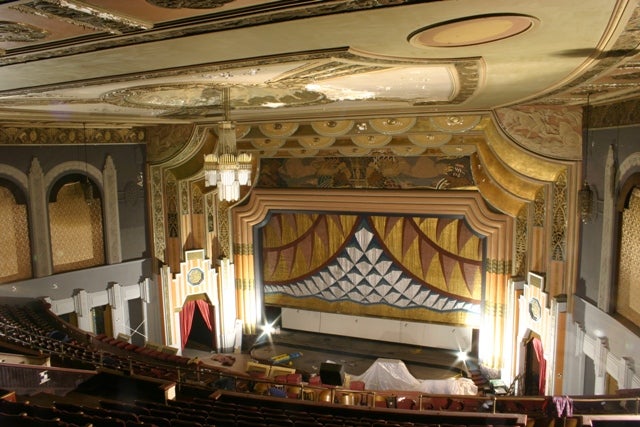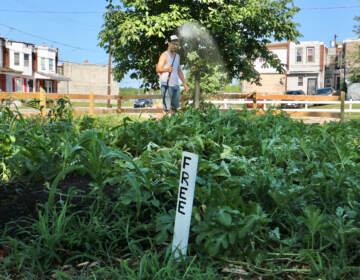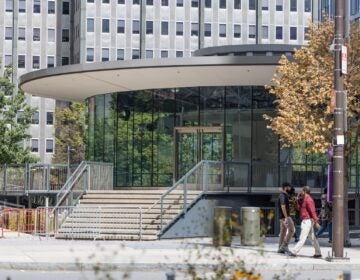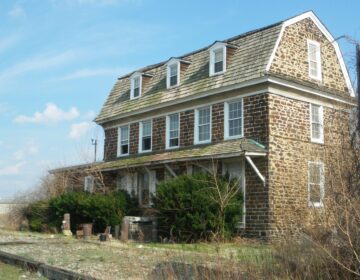Looking beyond the exterior facade

July 28
By Thomas J. Walsh
For PlanPhilly
The Philadelphia Historical Commission’s ad hoc committee on legislation convened for the first time Monday morning to consider a fundamental change to the commission’s role as a city agency: the historic designation of certain buildings’ interiors.
The Historical Commission regulates the “exterior envelopes” of buildings for historic registration and preservation purposes, as well as sites, city blocks and whole districts that contain historic structures. A bill introduced May 22 by City Councilman At-Large Bill Green would expand the commission’s influence, authorizing it to designate – and regulate – “interior portions of buildings that are, or were designed to be, open or accessible to the public by invitation or otherwise.”
Though informative, the semantic nature of the three-hour meeting was almost enough to make an attendee wish the measure was simply jammed through council at 4:45 p.m. on a Friday before a holiday, the old-fashioned way.
But the committee meeting was designed to discuss recommended revisions to the bill’s language suggested by the Historical Commission staff. The issue will again be discussed Aug. 8 when the commission as a whole meets, with the goal of having a firm recommendation to make to the Philadelphia City Planning Commission, which likely won’t meet again until September 16.
The newly active and influential Planning Commission may or may not have a decision on the matter in time for the first day City Council resumes on September 18. City Council takes the bill after the Planning Commission, by which time it’s a fair bet that the city’s owners of buildings with public, or formerly public, spaces – such as the Boyd Theatre on Chestnut Street, with its shuttered grand entryway and exquisite Art Deco lobby – will have taken notice that something significant might be going down. On this mid-summer Monday morning, nobody present raised an objection to the idea, though at least one representative of an owner of a large historic district building with significant public space was quietly observing. Afterward, she did not wish to be interviewed for this story.
Historical Commission Executive Director Jonathan Farnham presided, until Commissioner Scott Wilds (deputy director of the city’s Office of Housing and Community Development) was elected the new committee’s chairman.
Most of the committee’s other members were present as well, but the morning was largely a discussion between Wilds, two attorneys from the Philadelphia Law Department and John Gallery, the omnipresent-in-a-good-way executive director of the Preservation Alliance for Greater Philadelphia. Gallery rose from his seat in the audience to calmly seek clarifications on language in the bill or the suggested revisions, several times at the request of Wilds.
Green, dressed in the casual attire of a councilman on summer vacation, was on hand with members of his staff. He seemed equal parts politician and preservation wonk, expressing gratitude to the commission but jumping into the low-wattage fray when he disagreed with the back-and-forth on language for the bill.
“The code hasn’t been updated in a long time, and I certainly agree with Mr. Gallery and others,” Green said. “If you find areas of the historic preservation ordinance that need to be updated for other reasons, we’ll be happy to work with you to make those changes in the future. … Consider yourselves as having a friend on City Council.”
There are several examples of spaces that could be protected as historic if the commission is granted its new authority, but some have serious questions marks:
• City Hall. There might be no better example of a historically significant interior that was meant to be public space and has been used as such since it opened in the 19th century. No-brainer.
• The Boyd. Now privately owned, closed and for sale, the big movie palace would surely be on the list for an interior designation, owing to its design, history and functionality as a public space. But can a private owner be forced to maintain the interior spaces if it is designated historic in an after-the-fact fashion?
• The interior of the stone bases of the Benjamin Franklin Bridge. Spaces within these massive support towers are said to be wonderlands of never-opened elevated train platforms with produce stalls that never saw a customer and who-knows-what-else. But the bridge is considered a “structure,” not a “building,” and that could be problematic (see below).
• Buildings with semi-public use, privately owned. Think hotels, concert halls, bars, factories or warehouses, all of which could be purchased in their death throes by developers wishing to redevelop them into, say, apartment buildings or condominiums. Center City’s decade-long boom in residents, spiked property values and elevated profile were direct results of tax incentives for developers to convert derelict properties into hip new living spaces.
“The issue is what happens when there is a change of use but no physical change,” said Gallery, meaning, in one sense, if a building was public when built but private now, or if it had no obvious public access. Gallery said the legislation and the staff’s recommendations for changes to it were “vague.”
That proved to be an understatement.
You might think that the definition of words like “building,” “structure,” “shelter,” “demolition” and “alteration” would be obvious to a body such as the Historical Commission, and that the term “design,” when used as a noun or a verb, would be fairly clear within the context of a sentence. Or that the use of “to” versus “for” could be ironed out in lieu of putting it on the table for discussion.
You’d be wrong. Things got positively Clintonian at times. At least when it comes to drafting legislation for the designation of historic buildings. That is, the interior of such buildings. Or structures. Or, in any case, any place designed “to shelter human activity” (the word “designed” herein used verbally). As it happens, a “building” is not necessarily a “structure,” or is it the other way around? Or is a structure a “subset” of a building? It was hard to follow much of the time, several committee members concurred.
In the end (and make no mistake – it wasn’t entirely clear it would ever end) it was decided to use the phrase “buildings and structures” together throughout the bill as it is re-written, and at the very least to simply let the lawyers figure it out.
In all fairness to the commission, all of the semantics and tweaking of definitions and language was aimed at creating the best legislation possible, taking into consideration every legal scenario. Though the meeting was a classic case of seeing the sausage being made, in contrast to the occasional theatrics across the plaza at City Hall, what happened atop the One Parkway Building on Monday will have profound consequences for owners of historic buildings and the redevelopment of abandoned buildings that might have interiors that the city deems worthy of preserving.
“I want to thank everyone for the thoughtfulness … put into this meeting,” Green said.
Commissioner John Mattioni, a Center City environmental and municipal lawyer and a former deputy city solicitor, expressed concern early in the meeting that not enough people knew about the bill, especially among the real estate community. He was assured by Farnham that the meeting was advertised in the same way that all commission meetings are advertised, in accordance with commonwealth law, and that “interested parties have had an opportunity to become aware” via forwarded emails and the like.
“That’s all well and good,” Mattioni said. “But nothing above and beyond” what’s required by law?
Like many of the planning and development issues that have bubbled to the surface under the Nutter administration, this one has drawn parallels, in both the “pro” and “con” columns, to New York City, which has its own version of interior space historic preservation.
For more on the early reaction to the legislation, see this June 18 story, which was overshadowed a bit by Mayor Nutter’s line-in-the-sand speech that night about the Planning Commission at the Philadelphia Academy of Natural Sciences: http://www.planphilly.com/node/3348
Contact the reporter at thomaswalsh1@gmail.com
Green’s bill: http://webapps.phila.gov/council/detailreport/?key=8615 (Scroll down to “Attachments” to download a PDF of the bill as amended June 11.)
WHYY is your source for fact-based, in-depth journalism and information. As a nonprofit organization, we rely on financial support from readers like you. Please give today.






